#emd f unit
Explore tagged Tumblr posts
Text

Somewhat going against the whole faces theory I put forward, I guess this is what a face would look like on an F unit. I imagine the B unit is faceless, but does have intelligence and can talk with other engines via the MU cable. Or maybe it doesn't and it's just a regular, mundane piece of machinery.
Tennessee & Atlantic Railway really didn't buy that many diesels; in 1940, Charlotte, NC (followed by Asheville in 1946) banned steam and diesel workings within city limits for pollution reasons; so, many routes in the Appalachian Mountains that were already better suited to electrification were staffed by, initially, Baldwin-Westinghouse 2-C+C-2 boxcabs (pictured below in service with the NYNH&H):

and later on, in the 1950s through 1970s, by converted FTs, F2s, F7s, and English Electric-built units to the same design (but regauged) as the ones they built for Victorian Railways:


Until eventually they ended up buying EMD AEM-7s in 1986, having 98 delivered in 1987-93, which displaced their older units.
As such, diesels tended to be reserved for routes avoiding the Blue Ridge Mountains and western North Carolina in particular. Eventually, the cities lifted these laws, but not before the Tennessee & Atlantic was merged with two other neighboring railways into the North Carolina Western Group on January 1, 1968. T&A was the largest merging entity, and so the other railways' operations were restructured to fit theirs.
As for the lore of this/these engine(s) in particular, they're diesels reserved and painted for use with the Mockingbird, a Memphis-Nashville-Atlanta-Jacksonville train (continuing to Miami via SAL) that ran twice a day in both directions (four total), alongside 2A/B, 3A/B, and 4A/B. Built in 1946, F3 1A/B was delivered new to the T&A, where they (or she if we're going by only the A units being alive, which I will write as if is the case from here on) and their sisters started on fast agricultural freight while the steam engines rode out their last few years on the Mockingbird, gaining experience to ensure even higher passenger safety.
During one of these trips, on a stop at Atlanta coming from Jacksonville with Florida agriculture, 1A, or Margaret E. C. French, had a careless driver accidentally top her fuel tank off with water from a pipe still up for their steam; since 1B was still providing power they could still move at first but eventually, French had to stop after her engine block started making noise; the water bent her piston rods. A steam engine that had treated her with open disregard at the yard and 1B had to haul her train to Bowling Green, and her to repair shops in Chattanooga, TN.
Another notable incident happened on January 8, 1955, when 1A nearly collided with a slower passenger train, barely avoiding coupling at a speed difference of 30 mph, after noticing the train before her driver and warning him.
Eventually, on May 31, 1955, the Mockingbird's last steam-hauled trip (pulled by one of the company's many 4-8-4s, which they called "Generals" rather than "Northerns") reached Jacksonville and back, with engine changes at Atlanta, where 1A/B, freshly repainted in the red/maroon/silver scheme depicted at the top of the page (previously in the silver/maroon scheme depicted later down) began to pull the first northbound (train 10). They would handle this job, albiet not necessarily on the same timeslot, for roughly 45 years, before being replaced by custom SD60M-based units in 1999. Amtrak wouldn't take the train over until 2010, at which point, Amtrak's power replaced NCW's, and the SDP60Ms were sold to shortlines.
Generally, these trains had exceptional safety records, with fewer than 10 total incidents over the 1955-99 span. However, 3A/B taking train 14 did collide with the car of the Secretary of Transportation of Georgia in 1974, having left it after it stalled on the level crossing. Nobody was hurt, but train 14 did need to be towed to the station in downtown Atlanta, where the train was taken over by an SD40-2.
Based on Clarabel's face from Tramway Engines - Mavis.
3 notes
·
View notes
Text
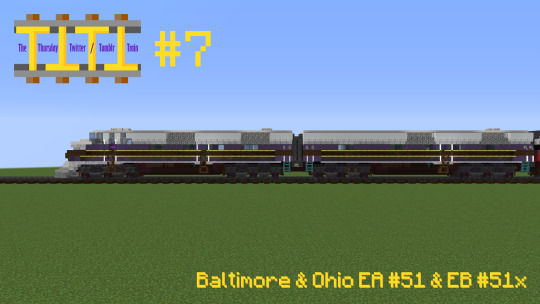
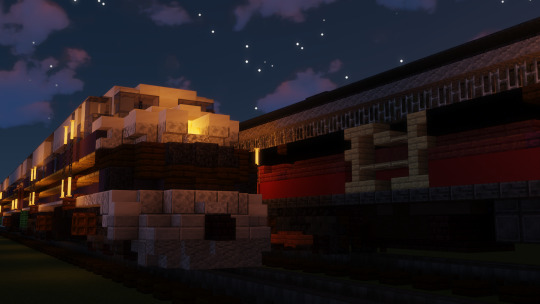
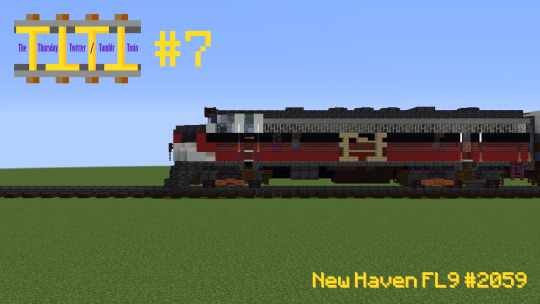


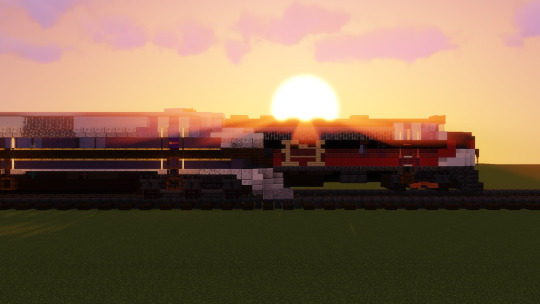
TTTT 7: A pair of legends in the diesel-electric world! B&O's EMD EA/EB #51, the first streamlined diesel engine in history; and NH's FL9 #2059, the last in a line of over 7,600 units in the EMD F family. The latter of these engines never received its own B variant, but in order to let it run through the underground tunnels to NY Grand Central, it was fitted with electrical equipment, third-rail contact shoes, and an extra rear axle to carry them!
6 notes
·
View notes
Text
I think canon criminally underuses the fact that Greaseball’s replica basis (midcentury carbody locos) are almost incapable of going backwards due to lack of visibility and most of the Nationals aren’t any better since most of them would have another power car on the end of the train irl. Any kind of switcher would clean house in a backwards race against that field and it’s a convenient way to have Rusty win legitimately.
#electra is double ended and complicates this but basis swap them to something actually modern and it’s back to the power car issue#i have physically been on an emd f-unit (mini greaseball) and cf-7 (roadswitcherfied rebuild) and totally understoof why they did that LOL#every time i look at greaseball i think about the terrible visibility in that thing
1 note
·
View note
Text

Covered Wagons: A Series
This is a southbound freight on the Chicago & Alton, later GM&O, then ICG at the time of the photograph. The location is Shirley, Illinois, just south of Bloomington.
Bloomington was known as a haven for F-units in the mid- to late-1970s. I was able to photograph the so-called covered wagons several times before the charismatic locomotives were ether scrapped or sold off (most in 1977). A couple went to the MBTA: they were rebuilt and served commuter trains in the Boston area.
Four EMD F3s are seen here powering this train headed south toward East St. Louis. I followed the train and will post additional images in subsequent posts.
One image by Richard Koenig; taken November 21st 1976.
#railroadhistory#railwayhistory#chicago&alton#gulfmobile&ohio#illinoiscentralgulf#icg#shirleyillinois#shirleyil#mbta#coveredwagons#f-unit#f3
55 notes
·
View notes
Video
Rain in LaPlace, Louisiana por Jeff Terry Por Flickr: The annual CPKC Holiday Express visited communities along the former Kansas City Southern Lines from late November until mid-December 2024. The train first ran southeast from Shreveport, Louisiana, to Jackson, Meridian, and Vicksburg, Mississippi on the former Midsouth. After that it rolled over the old Louisiana & Arkansas to LaPlace (New Orleans) and Baton Rouge. Power for the train is provided by three classic EMD F units in KCS paint. The “Holiday Express” itself consists of a non-powered “locomotive” (“Rudy”), a generator car, Santa flatcar, model train display boxcar, and a pair of former Gateway Western cabooses.
5 notes
·
View notes
Text

Conrail FL9 5059, built in 1960 as New Haven 2059, was the last of the 7,612 F-units built by EMD. It headed up a Croton-Harmon to Poughkeepsie shuttle sandwich at the Garrison, NY, station. August, 1981
#commuter train#cr#conrail#mta#metropolitan transportation authority#1981#new york city#trains#passenger train#history#garrison#new york
5 notes
·
View notes
Text

Next Generation Air Dominance Fighter Competition Has Begun
Joseph TrevithickPUBLISHED May 18, 2023 3:39 PM EDT
Next Generation Air Dominance Fighter Competition Has Begun
Lockheed Martin
The U.S. Air Force has released a classified contract solicitation for the engineering and manufacturing phase of the development of a new stealth six-generation crewed tactical jet. The effort is part of the service's larger Next Generation Air Dominance modernization initiative, or NGAD. The future NGAD combat jet is expected to be a direct successor to the F-22 Raptor stealth fighter, but serve in a much more expansive role than its predecessor.
Competition to win this contract will be immensely heated as it could very well be the last advanced manned tactical fighter-like aircraft built for the United States Air Force.
The Air Force announced the solicitation in a press release today. Secretary of the Air Force Frank Kendall had said the NGAD combat jet was entering its engineering and manufacturing development (EMD) phase last June. Kendall's comments were followed by the announcement of an Inspector General investigation into the maturity of the NGAD combat jet program. He clarified last September that it had not formally reached that milestone. At least one demonstrator design has already been flying for years now and Kendall has said in the past that this program has leveraged advanced experimental design work dating back at least to 2015.
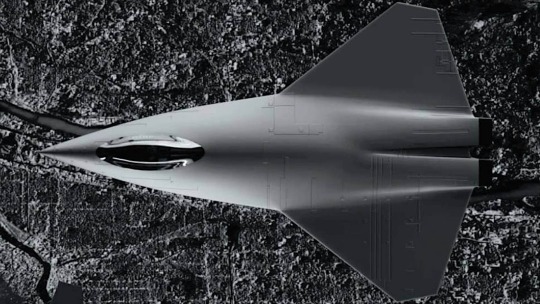
An artist's conception of an advanced sixth-generation combat jet. Collins Aerospace Collins Aerospace
"The NGAD Platform is a vital element of the Air Dominance family of systems which represents a generational leap in technology over the F-22, which it will replace," Secretary of the Air Force Frank Kendall said in a statement accompanying the press release. "NGAD will include attributes such as enhanced lethality and the ability to survive, persist, interoperate, and adapt in the air domain, all within highly contested operational environments. No one does this better than the U.S. Air Force, but we will lose that edge if we don't move forward now."
Details about exactly what the Air Force is looking for in this aircraft remain limited. Who may be expected to submit proposals is unknown, though the general expectation is that Lockheed Martin, Northrop Grumman, and Boeing will be at the center of the forthcoming competition.

A screen capture from a Northrop Grumman promotional video showing a rendering of an advanced combat jet concept, at left, among other aircraft. Northrop Grumman capture
"This solicitation release formally begins the source selection process providing industry with the requirements the DAF expects for NGAD, as the future replacement of the F-22," according to today's press release. "Further information on the NGAD Platform's technical and programmatic details are classified to protect operational and technological advantages."
"The NGAD acquisition strategy will invigorate and broaden the industrial base to deliver rapid and innovative warfighting capabilities," it adds. "The strategy incorporates lessons learned from recent Air Force acquisition programs and will leverage open architecture standards. This approach will enable the government to maximize competition throughout the life cycle, provide a larger, more responsive industry base and drastically reduce maintenance and sustainment costs."
Secretary Kendall has said in the past that he expects the NGAD combat jets to be very exquisite platforms that will cost "multiple hundreds of millions of dollars" apiece. Broadband stealth, advanced electronic and other "spectral" warfare capabilities – which you can read more bout in detail here – and significant range and payload capabilities are all likely to be central components of the design. The broader NGAD initiative also contains programs focused on the development of advanced drones with high degrees of autonomy, as well as new jet engines, weapons, electronic warfare suites, sensors, battle management capabilities, and other systems.
An infographic giving a basic overview of NGAD-related efforts. NGAD is the centerpiece of what the Air Force is also calling Operational Imperative 4, one of seven such focus areas that Secretary Kendall has laid out. USAF
The expectation has also already long been that these aircraft would supplant the Air Force's F-22s and take on their roles, including acting as stealthy "quarterbacks" for managing major air operations in highly contested areas. That the NGAD combat jet will play this latter role was reinforced last year when Secretary Kendall announced that the Air Force was planning around a purchase of 200 NGAD aircraft, as well as at least 1,000 drones called Collaborative Combat Aircraft (CCA). The initial 1,000 drone figure was based around a concept of operation wherein two of them would be paired with each of the 200 NGAD jets, as well as 300 stealthy F-35A Joint Strike Fighters. The CCA program is another part of NGAD.
youtube
From a contracting perspective, there are clear indications that the Air Force is looking to avoid making the same kinds of mistakes it has made with other high-profile aircraft acquisition programs in the past, especially the F-35A. Kendall has publicly spoken about his interest in being able to secure more data rights in order to be less beholden to the original equipment manufacturer for follow-on upgrade and sustainment deals.
That, together with the relatively low expected production volume and high unit for the NGAD combat jet, could lead to intense competition for the EMD deal, but then greater focus on the part of winning and losing contractors afterward on various other NGAD projects — especially the CCA program. While the Air Force is planning right now around acquiring at least 1,000 CCAs all of one type, Secretary Kendall has left the door open there for purchases of hundreds, if not thousands more of drones of multiple types to meet the services needs in this regard. The final number of manned NGAD airframes is likely to fluctuate as well as the program progresses.
Multiple contractors, small and large, will have to collaborate on the final NGAD design, no matter what company is chosen to lead the development.
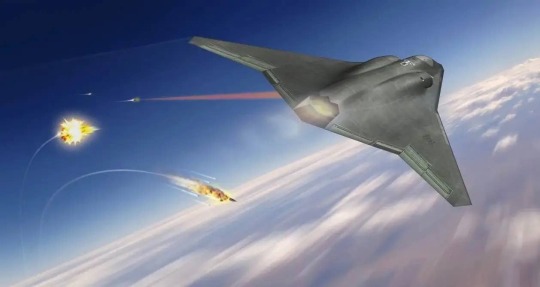
Another rendering of a sixth-generation combat jet, depicted here firing a directed energy weapon. The development of lasers and other direct energy weapons is another aspect of the broader NGAD program. Northrop Grumman
The Air Force hopes to award the NGAD Platform EMD phase contract sometime next year. The service officials have said in the past that the hope is that actual NGAD combat jets will begin entering operational service before the end of the decade. This ambitious schedule further points to significant research and development work having already been done.
In its 2024 Fiscal Year budget request, the Air Force is asking for $276 million to help with risk reduction work on the crewed NGAD combat jet. This is part of the $1.93 billion in NGAD funding the Air Force is looking to receive in the next fiscal cycle. This notably does not include some elements of the broader initiative, including separate funding streams for CCA and the Next Generation Adaptive Propulsion (NGAP) engine program.
How the NGAD platform EMD contract award impacts the U.S. Navy's separate work on an advanced sixth-generation combat jet on its own NGAD program is an open question. The two services have distinct requirements for their next-generation tactical aircraft, but they are both working closely together on various aspects of their programs. For instance, both NGAD platforms will be able to control each other's CCAs via a common communications architecture. Deep cooperation is also going on with many other facets of the programs. While the airframes may end up looking different, sub-systems, coatings and more will likely be shared, at least to some degree. The Navy has its own program in place to develop what it is referring to as F/A-XX, which looks set to expand dramatically in the next year.
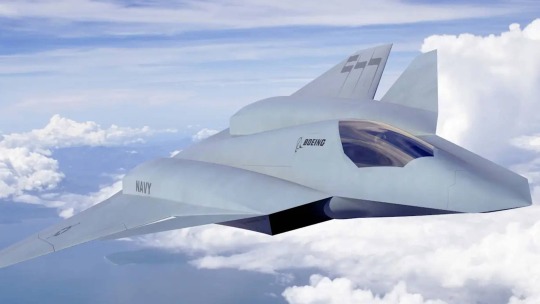
A Boeing rendering of a sixth-generation combat jet for the Navy. Boeing Boeing
All this being said, the manned NGAD platform is still expected to become the centerpiece of the Air Force's future tactical combat jet fleets for years to come and it will also be coupled with the Long Range Strike family of systems, of which the B-21 is the centerpiece. Now the Air Force has taken the next big step toward making this aircraft a reality.
5 notes
·
View notes
Note
So I have a love/hate relationship with New York Central streamlined steam locomotives, mostly hate. However I have been eyeing a 20th Century Limited set and if I did get it, I'd probably also get a Dreyfus Hudson to go with it at some point. And they are the most iconic of the Central's streamliners. I'd also consider the Mercury since it was local to where I live. Not the Empire State Express though, I hate the nose on those.
Yeah, those are nice trains! I had to look up the Empire State Express, and I agree, that one's not really convincing. Looks like the NW 601 with random steel fluting applied. I can sort of appreciate the idea of making the locomotive match the Budd steel cars, kind of like the EMD E5 of the Burlington, but the end result doesn't really come together for me.
Kato is selling the Empire State Express in N scale, but only EMD E7s to go with it. Nice locomotives, don't get me wrong, but I have more than enough E and F units as it is, the urge to get more isn't super strong. At least not until I manage to build some more tracks so I can run my trains again. I have one table for that in my small apartment and it's mostly full with other stuff at the moment…
1 note
·
View note
Text
Multiple Sclerosis Drugs Market to Hit $34.36 Billion by 2032
The global Multiple Sclerosis Drugs Market was valued at USD 25.90 Billion in 2024 and it is estimated to garner USD 34.36 Billion by 2032 with a registered CAGR of 3.6% during the forecast period 2024 to 2032.
The report throws light on the competitive scenario of the global Multiple Sclerosis Drugs Market to know the competition at global levels. Market experts also provided the outline of each leading player of the global Multiple Sclerosis Drugs Market for the market, considering the key aspects such as the areas of operation, production, and product portfolio. In addition, the companies in the report are studied based on vital factors such as company size, market share, market growth, revenue, production volume, and profit.
The global Multiple Sclerosis Drugs Market is fragmented with various key players. Some of the key players identified across the value chain of the global Multiple Sclerosis Drugs Market include Celgene Corporation, Acorda Therapeutics Inc., Biogen Inc., Actelion Pharmaceuticals (Johnson & Johnson), EMD Serono (Merck KGaA), Bayer AG, Teva Pharmaceutical Industries Ltd., Novartis AG., Sanofi, F. Hoffmann-La Roche Ltd. and others. etc. Considering the increasing demand from global markets various new entries are expected in the Multiple Sclerosis Drugs Market at regional as well as global levels.
Download Multiple Sclerosis Drugs Market Sample Report PDF: https://www.vantagemarketresearch.com/multiple-sclerosis-drugs-market-1859/request-sample
Top Competitors:
Celgene Corporation, Acorda Therapeutics Inc., Biogen Inc., Actelion Pharmaceuticals (Johnson & Johnson), EMD Serono (Merck KGaA), Bayer AG, Teva Pharmaceutical Industries Ltd., Novartis AG., Sanofi, F. Hoffmann-La Roche Ltd. and others.
Understanding the Industry's Growth, has released an Updated report on the Multiple Sclerosis Drugs Market. The report is mixed with crucial market insights that will support the clients to make the right business decisions. This research will help new players in the global Multiple Sclerosis Drugs Market to sort out and study market needs, market size, and competition. The report provides information on the supply and market situation, the competitive situation and the challenges to the market growth, the market opportunities, and the threats faced by the major players.
Regional Analysis
-North America [United States, Canada, Mexico]
-South America [Brazil, Argentina, Columbia, Chile, Peru]
-Europe [Germany, UK, France, Italy, Russia, Spain, Netherlands, Turkey, Switzerland]
-Middle East & Africa [GCC, North Africa, South Africa]
-Asia-Pacific [China, Southeast Asia, India, Japan, Korea, Western Asia]
You Can Buy This Report From Here: https://www.vantagemarketresearch.com/buy-now/multiple-sclerosis-drugs-market-1859/0
Full Analysis Of The Multiple Sclerosis Drugs Market:
Key findings and recommendations point to vital progressive industry trends in the global Multiple Sclerosis Drugs Market, empowering players to improve effective long-term policies.
The report makes a full analysis of the factors driving the development of the market.
Analyzing the market opportunities for stakeholders by categorizing the high-growth divisions of the market.
Questions answered in the report
-Who are the top five players in the global Multiple Sclerosis Drugs Market?
-How will the global Multiple Sclerosis Drugs Market change in the next five years?
-Which product and application will take the lion's share of the global Multiple Sclerosis Drugs Market?
-What are the drivers and restraints of the global Multiple Sclerosis Drugs Market?
-Which regional market will show the highest growth?
-What will be the CAGR and size of the global Multiple Sclerosis Drugs Market during the forecast period?
Read Full Research Report with [TOC] @ https://www.vantagemarketresearch.com/industry-report/multiple-sclerosis-drugs-market-1859
Reasons to Purchase this Multiple Sclerosis Drugs Market Report:
-Analysis of the market outlook on current trends and SWOT analysis.
-The geographic and country level is designed to integrate the supply and demand organizations that drive industry growth.
-Multiple Sclerosis Drugs Industry dynamics along with market growth opportunities in the coming years.
-Multiple Sclerosis Drugs Market value (million USD) and volume (million units) data for each segment and sub-segment.
1 year consulting for analysts along with development data support in Excel. Competitive landscape including market share of major players along with various projects and strategies adopted by players in the last five years.
Market segmentation analysis including qualitative and quantitative analysis including the impact on financial and non-economic aspects.
Complete company profiles that include performance presentations, key financial overviews, current developments, SWOT analyzes and strategies used by major Multiple Sclerosis Drugs Market players.
Check Out More Reports
Global Biopolymer Coatings Market: Report Forecast by 2032
Global Alcohol Ingredients Market: Report Forecast by 2032
Global Mushroom Market: Report Forecast by 2032
Global Car Anti-Theft Devices Market: Report Forecast by 2032
Global Consumer Electronics Market: Report Forecast by 2032
#Multiple Sclerosis Drugs Market#Multiple Sclerosis Drugs Market 2024#Global Multiple Sclerosis Drugs Market#Multiple Sclerosis Drugs Market outlook#Multiple Sclerosis Drugs Market Trend#Multiple Sclerosis Drugs Market Size & Share#Multiple Sclerosis Drugs Market Forecast#Multiple Sclerosis Drugs Market Demand#Multiple Sclerosis Drugs Market sales & price
0 notes
Text
EMD E-UNITS, F-UNITS, GP-9s and SD-9s
1 note
·
View note
Text
[F->B] EMD - GP10, GP18
Note that the GP10 is a classification for a rebuild done by the Illinois Central to GP7s, 9s, & 18s. In this case, 8343 started life as a GP9.
also the caption says they're abandoned but there's guys in high vis vests in the lead unit 🤔
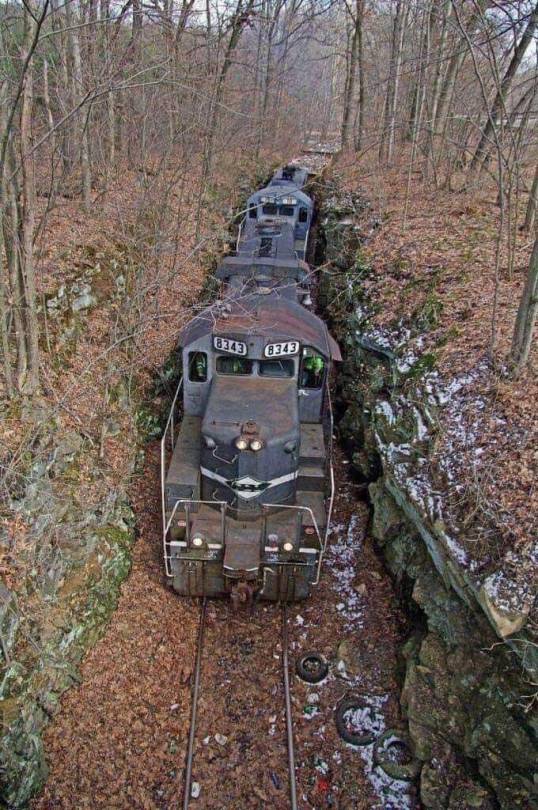
Abandoned train on a railway
142 notes
·
View notes
Video
Light Engines, Heavy Snow by Vincent Colombo Via Flickr: During a heavy snowfall, CSX B727 is seen coming off of the Myles Standish lead in Taunton, MA. Until 1965, trains had a straight shot to Mansfield using the track to the right. The line now only extends about 1.5 miles to serve a couple customers in the industrial park, while the line to Attleboro is still intact.
#70-200 f/4#CSX#CSX B727#CSXT 6226#Canon 77D#EMD GP40-2#Fremont Street#MA#Middleboro Subdivision#Myles Standish#Taunton#Massachusetts#United States
23 notes
·
View notes
Text
It’ll take a while for me to decide how I want to approach Girlball but I like the idea of her being some kind of EMD export model. American diesel engines have had some success in the UK and mainland Europe mostly for freight service and it’s a good successor to a E/F unit coded character.
Only problem is a lot of them are just… so ugly. Not even charming in the ruthlessly utilitarian industrial way, a lot of European freight trains are just uggo.
#don’t get me wrong they do a lot of things better there train wise#but for liveries and freight aesthetics and horns yeah I’m more patriotic… for the entire continents of North/South America
1 note
·
View note
Video
Santa Fe back in the day... by santafetrainman
#ATSF#AtchisonTopeka&SantaFeRailway#SantaFe#AtchisonTopeka&SantaFe#California#SantaFeRailroad#SantaFeRailway#EMD#F-units#train#trains#trainspotting#track#tracks#RR#rail#rails#railroad#railroads#railway#railways#locomotive#diesel locomotive#AT&SF#santa fe#old cars#b&w photography#vintage#retro
75 notes
·
View notes
Text
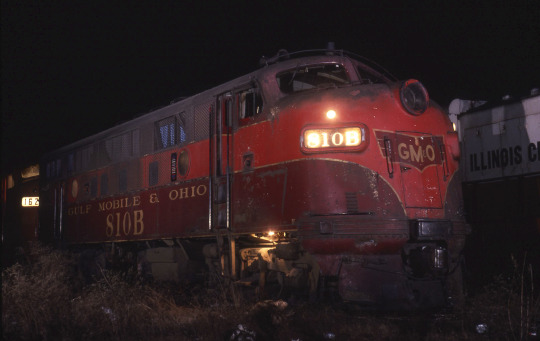

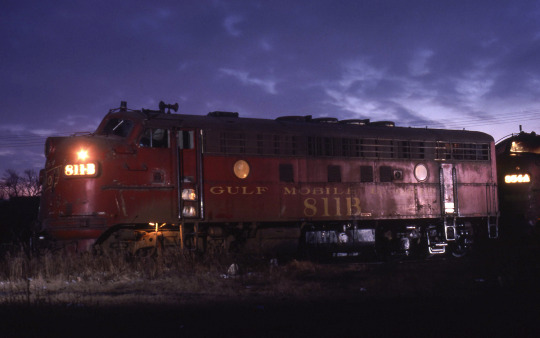
Night into Dawn—Bloomington, Illinois
Bloomington was a haven for EMD F-units back in the mid- to late-1970s. I ventured over there from Indiana several times to shoot the "covered wagons" of the Gulf Mobile & Ohio, sometimes in the dark. The GM&O was part of the Illinois Central Gulf by that time, but engines weren't painted quickly after the merger took place in 1972, which was fabulous for railroad enthusiasts. [I believe two of the F3s did make it into the orange and white scheme of the ICG.]
We begin this little sequence of images with a view of number 810B: it's an F3 built in 1947. This unit would be upgraded to pull commuters for citizens of Boston, as MBTA 1111. [In the end, a few of these charismatic F-units went to Boston, a few others to Metro North, but I believe others were scrapped within a couple of years from the time of these photos being made.]
Despite the lure of the Fs, I was also attracted to this wonderful SD40, a so-called Redbird. This one was built in September of 1966. Lastly, number 811b is an EMD F7 built in 1949.
I love the beginnings of daylight in the eastern sky in these latter two images. Three photographs by Richard Koenig; taken at dawn on November 21st 1976.
#railroadhistory#railwayhistory#filmphotography#illinoiscentral#illinoiscentralgulf#gulfmobile&ohio#gm&o#bloomingtonillinois#bloomingtonil#emdf7#emdsd40#emdf3#coveredwagon
34 notes
·
View notes

